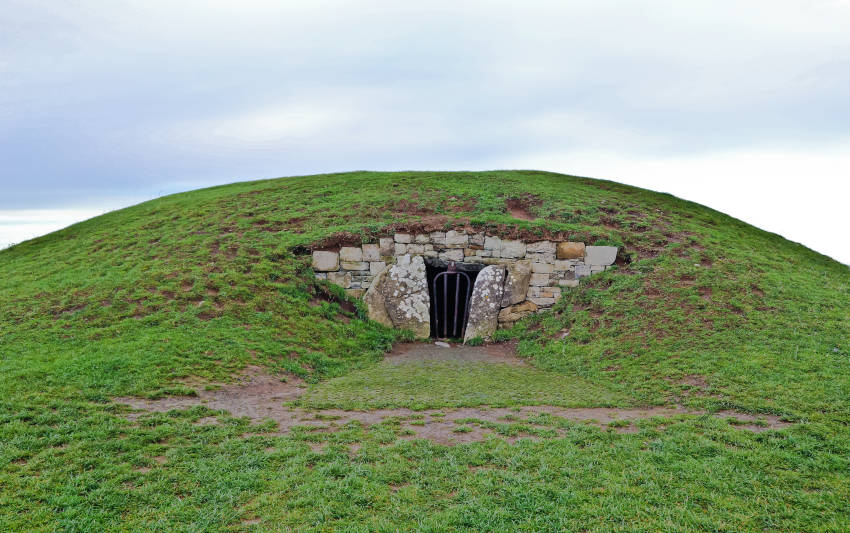What does the Celtic festival of Samhain mean?
For ancient Celts, Samhain was marked as the most significant of four quarterly fire festivals and was seen as a window to another world.
Samhain was a crucial time of year - and the most important of all the Irish festivals and was loaded with a huge amount of symbolic significance for the pre-Christian Irish.
Right at the mid-point between the fall equinox and the winter solstice, Samhain was a hugely important time when hearth in family homes all over the country were left to burn out as the harvest was gathered. It marks the end of the harvest season and beginning of the winter or 'darker half' of the year. It's also the Irish language name for the month of November.
Traditions Being Revived
Today Halloween is more about door to door trick or treating, pumpkins and fireworks, but many of the older traditions continue to this day and are being revived with gusto.
Traditionally and still nowadays, celebrations began on the evening of 31st October, as the Celtic day began and ended at sunset. Samhain is one of the four Gaelic seasonal festivals along with Imbolc, Bealtaine and Lughnasa.
 |
Mound of the Hostages on the Hill of Tara
|
It's believed to have Celtic pagan origins and some Neolothic passage tombs in Ireland are aligned with the sunrise at the time of Samhain. The entrance passage to the Mound of the Hostages on the Hill of Tara aligned with the rising son around Samhain. Thought to be around 5,000 years old, it's suggested that Samhain was celebrated long before the first Celts ever arrived in Ireland around 2,500 years ago.
It's mentioned in the very earliest Irish literature from the 9th century and is associated with many important events in Irish mythology. The early literature says that Samhain was marked by great gatherings and feasts and was when the ancient burial mounds were open which were seen as portals to the other world.
Two hills in the Boyne Valley were associated with Samhain in Celtic Ireland. Tiachtga was the location of the Great Fire Festival which began on Halloween night and Tara was also associated with Samhain.
It was said to be a 'thin time' of year when the boundaries between a man's land and his neighbours was a very dangerous place to be on this night. Ghosts were to be found and any entrances to adjacent land were thought to be particularly dreaded and best avoided. Bridges and crossroads were also thought to be very dangerous and a place to encounter ghosts. The dead were thought to mingle free with the living!
For some, the Boyne Valley is thought to be the Home of Halloween and there's now spine-tingling fun with 'Fright by Night' in the Spirits of Meath Festival, keeping the traditions alive.
 |
| Newgrange |
It was at Samhain when the 'Sidhe' or spirits of the otherworld were more likely to emerge from their mounds, such as Newgrange or Knowth and one story even tells of the legendary warrior Fionn Mac Cumhaill who had to defend the people from a dangerous attack by a fearsome monster who had been known to attack every year at the time of Samhain.
Halloween as an Irish and Celtic tradition has changed over the years but many aspects derive from these ancient customs from dressing up, apple bobbing and making offerings of food and drink (now trick or treating). When Europeans left for America they were said to have brought these customs with them. In the USA, Halloween became very popular and the Jack O'Lantern is first mentioned in America in the late 18th century.
For the poorer people, turnips and pumpkins were used as lanterns and first linked to Halloween in a Scottish dictionary as far back as 1808.
Legend had it that there was a 'thinning of the veil' at this time of year and that the entire world became magical with the fairy folk coming out and getting up to mischief.